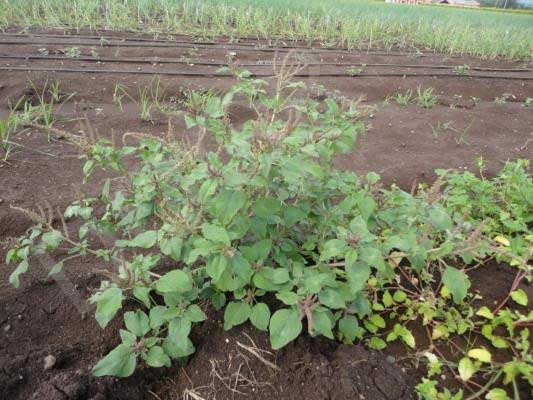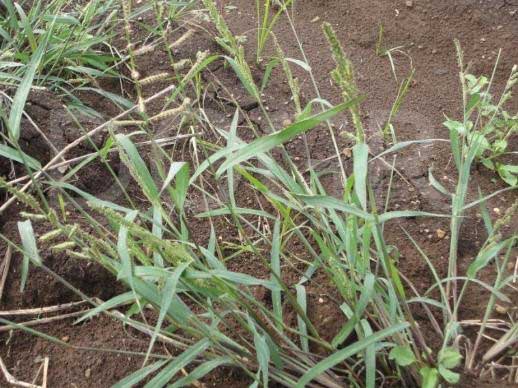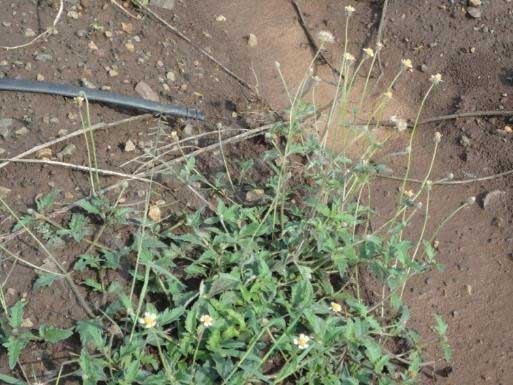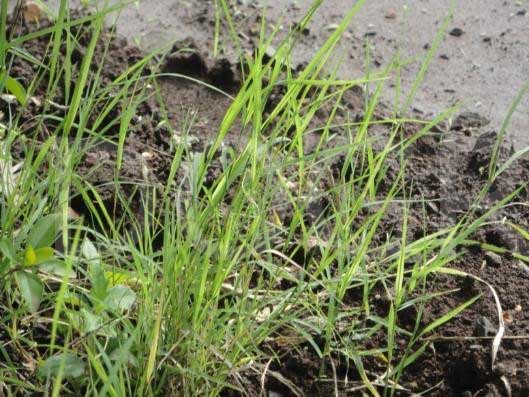Weed management
Germination of cloves will take 7-8 days, but weeds germinate in 3-4 days after planting of garlic and grow at faster rate than garlic and cover entire field. Frequent irrigation and fertilizer application to garlic crop also favour severe crop-weed competition. Weeds compete with the crop for water, soil nutrients, light and space. Garlic crop exhibits a greater susceptibility to weed competition than most other crops, mainly due to its slow growth at initial growth stages and inherent characteristics such as short stature, non-branching, sparse foliage and shallow root system. Common weeds found in garlic fields are Motha (Cyprus rotundus), Bermuda grass (Cyanodan dactylan), Kankawa (Commelina benghalensis), Congress grass (Parthenium hysterophorus), Kantachaulai (Amaranthus spinosus), Jungali chaulayi (Amaranthus viridis), Bathua (Chenopodium album), Purslane (Portulaca oleracea), Sabuni (Trianthema portulacastrum), wild Poinsettia (Euphorbia geniculata), Makra (Dactyloctenium aegyptium), Hogvine (Merremia umbellate), Foxtail grass (Cenchrus ciliaris), Signal grass (Brachiaria spp.), Khal-muriya (Tridaxpro cumbens) etc. (Fig. 2).Control of weeds at the initial growth stages is essential for getting high marketable bulb yield. Because of labour scarcity, chemical control of weeds along with cultural methods is inevitable. Application of Oxyflurofen 23.5% EC @ 1.5 -2.0 ml/L or Pendimethalin 30% EC @ 3.5-4ml/L before or at the time of planting followed by one hand weeding at 40-60 days after transplanting is recommended for efficient weed control.
|
|
 |
|
Congress grass (Parthenium hysterophorus) |
Motha (Cyprus rotundus) |
 |
 |
|
Purslane (Portulaca oleracea) |
Sabuni(Trianthem aportulacastrum) |
 |
 |
|
Jungalichaulayi (Amaranthus viridis) |
Banyard grass (Echino chloacrus galli) |
 |
 |
|
Khal-muriya(Tridax procumbens) |
Bermuda grass (Cyanodan dactylan) |
















